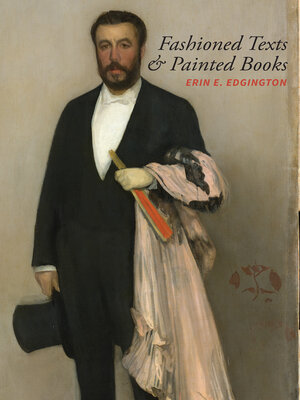Fashioned Texts and Painted Books
ebook ∣ Nineteenth-Century French Fan Poetry · North Carolina Studies in the Romance Languages and Literatures
By Erin E. Edgington

Sign up to save your library
With an OverDrive account, you can save your favorite libraries for at-a-glance information about availability. Find out more about OverDrive accounts.
Find this title in Libby, the library reading app by OverDrive.



Search for a digital library with this title
Title found at these libraries:
| Library Name | Distance |
|---|---|
| Loading... |
Fashioned Texts and Painted Books examines the folding fan's multiple roles in fin-de-siècle and early twentieth-century French literature. Focusing on the fan's identity as a symbol of feminine sexuality, as a collectible art object, and, especially, as an alternative book form well suited to the reception of poetic texts, the study highlights the fan's suitability as a substrate for verse, deriving from its myriad associations with coquetry and sex, flight, air, and breath. Close readings of Stéphane Mallarmé's éventails of the 1880s and 1890s and Paul Claudel's Cent phrases pour éventails (1927) consider both text and paratext as they underscore the significant visual interest of this poetry.
Works in prose and in verse by Octave Uzanne, Guy de Maupassant, and Marcel Proust, along with fan leaves by Edgar Degas, Édouard Manet, Berthe Morisot, and Paul Gauguin, serve as points of comparison that deepen our understanding of the complex interplay of text and image that characterizes this occasional subgenre. Through its interrogation of the correspondences between form and content in fan poetry, this study demonstrates that the fan was, in addition to being a ubiquitous fashion accessory, a significant literary and art historical object straddling the boundary between East and West, past and present, and high and low art.
Works in prose and in verse by Octave Uzanne, Guy de Maupassant, and Marcel Proust, along with fan leaves by Edgar Degas, Édouard Manet, Berthe Morisot, and Paul Gauguin, serve as points of comparison that deepen our understanding of the complex interplay of text and image that characterizes this occasional subgenre. Through its interrogation of the correspondences between form and content in fan poetry, this study demonstrates that the fan was, in addition to being a ubiquitous fashion accessory, a significant literary and art historical object straddling the boundary between East and West, past and present, and high and low art.







